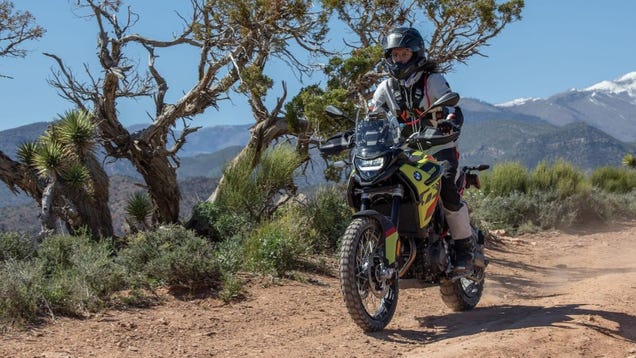The Importance of Motorcycle Gear: Why Safety Should Be Your Top Priority
Motorcycling is an exhilarating experience that offers a unique sense of freedom and adventure. However, it also comes with inherent risks. As a passionate motorcyclist, I firmly believe in the importance of wearing proper gear, particularly helmets. My own experience with an Arai XD-4 helmet transformed what could have been a severe skull fracture into a manageable concussion during an off-road ride. This incident underscores the critical role that safety gear plays in protecting riders.
Understanding the Risks of Riding Without Gear
Despite the clear benefits of wearing protective gear, a surprising number of riders still choose to ride without helmets or other safety equipment. According to the National Highway Traffic Safety Administration (NHTSA), nearly 40% of motorcyclists killed in crashes were not wearing helmets. This statistic highlights a significant gap in awareness regarding the risks associated with riding without proper protection.
Recent studies have shown that wearing a helmet can reduce the risk of head injury by 69% and the risk of death by 37%. These numbers are not just statistics; they represent lives saved and injuries prevented. The reluctance to wear helmets often stems from misconceptions about comfort, visibility, and style. However, advancements in helmet technology have addressed many of these concerns, offering lightweight, well-ventilated options that do not compromise safety.
The Role of Motorcycle Gear Beyond Helmets
While helmets are undoubtedly the most critical piece of safety equipment, they are not the only gear that riders should consider. Protective jackets, pants, gloves, and boots can significantly reduce the severity of injuries in the event of an accident. For instance, abrasion-resistant materials like Kevlar and leather can protect against road rash, while armored gear can shield vital areas such as shoulders, elbows, and knees.
A study published in the Journal of Trauma and Acute Care Surgery found that riders wearing protective gear were 37% less likely to sustain serious injuries compared to those who were not. This statistic reinforces the importance of a comprehensive approach to motorcycle safety, where every piece of gear contributes to overall protection.
Choosing the Right Gear for Your Riding Style
Selecting the appropriate gear is crucial and should be tailored to your specific riding style and environment. For example, off-road riders may prioritize lightweight, breathable materials that allow for mobility, while street riders might opt for more robust, weather-resistant gear.
Investing in high-quality gear can make a significant difference in your riding experience. Brands like Alpinestars and Dainese offer a range of options designed to meet the needs of various riders, combining safety features with comfort and style. It’s essential to try on gear and ensure a proper fit, as ill-fitting equipment can hinder movement and reduce protection.
Real-Life Examples of Gear Impacting Safety
Numerous anecdotes from riders illustrate the life-saving potential of wearing proper gear. One rider shared how a high-quality jacket saved him from severe abrasions after a fall, while another recounted how his gloves prevented a broken wrist during a low-speed accident. These stories highlight that safety gear is not just an accessory; it is a vital component of responsible riding.
Furthermore, organizations like the Motorcycle Safety Foundation (MSF) advocate for gear use through training programs that emphasize the importance of protective equipment. Their courses often include practical demonstrations of how gear can mitigate injuries, reinforcing the message that safety should never be an afterthought.
Addressing Common Misconceptions About Motorcycle Gear
Despite the overwhelming evidence supporting the use of motorcycle gear, some riders remain skeptical. Common misconceptions include beliefs that helmets restrict visibility or that gear is too hot to wear in warm weather. However, modern helmets are designed with improved ventilation and visibility features, making them more comfortable than ever.
Additionally, many manufacturers now produce gear specifically designed for hot weather, incorporating moisture-wicking materials and ventilation systems that enhance comfort without sacrificing safety. Riders should educate themselves about the advancements in gear technology to dispel these myths and make informed choices.
Promoting a Culture of Safety in the Riding Community
Ultimately, fostering a culture of safety within the motorcycle community is essential. Riders can support one another by sharing experiences, encouraging gear use, and participating in safety training programs. Social media platforms and local riding groups can serve as valuable resources for promoting safe riding practices and sharing information about the latest gear innovations.
By prioritizing safety and advocating for the use of protective gear, we can work together to reduce the risks associated with motorcycling. Each ride should be an opportunity to enjoy the thrill of the open road while ensuring that safety remains at the forefront of our minds.
In conclusion, the importance of wearing motorcycle gear cannot be overstated. From helmets to protective clothing, every piece of equipment plays a crucial role in safeguarding riders. By understanding the risks, choosing the right gear, and promoting a culture of safety, we can enjoy the freedom of motorcycling while minimizing the potential for injury.

